How are fossils formed?
Fossils are formed in many ways, but most are formed when a living organism (such as a plant or animal) dies and is quickly buried by sediment (such as dirt, sand, or volcanic ash). Soft tissues often break down, leaving only the hard bone or shell (although in special cases the organism's soft tissues can remain). After an organism is buried, more sediment, ash, or lava accumulates on top of the buried organism, and eventually all layers harden into rock (they become "petrified"). Only when the process of erosion occurs (the rock is worn away and washed away) do these once-living organisms reveal themselves to us from within the stone.

What does the word fossil mean?
The word fossil literally means "dug up" and it comes from the Latin word fossilis. A fossil is any remnant or trace of past life preserved in the rock record. Fossils include the remains of living organisms, such as plant or animal tissue, shells, teeth or bones, and even bacteria (!), but can also include traces of life, such as footprints or worm burrows. Fossils tell us the history of life on Earth, and we call it the fossil record.
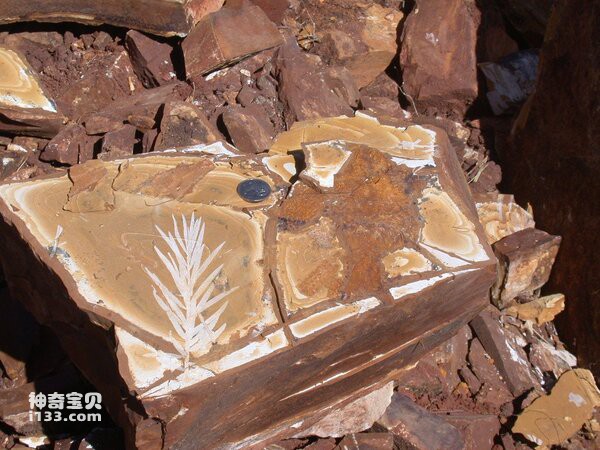
Five common ways fossils are formed
1. Hypermineralization occurs when dissolved minerals carried by groundwater fill the spaces within plant and animal cells. Dissolved minerals crystallize in these cellular spaces, eventually forming rocks in the shape of animals or plants. This is the most common type of fossil preservation, examples include teeth, bones, shells, and wood. We can call these fossils fossilized.
2. Impression fossils form when the original bones or tissues of an organism are removed by processes that occurred after burial, such as underground water flow. If the remains of an organism decompose completely, leaving an empty space in the shape of the organism, it is called a cast. If minerals fill this empty space and form the mineralized 3D shape of the organism, it is called a mold. Many marine invertebrates such as seashells are fossilized in this way.
3. Amber can protect organisms if they become trapped in the resin. This resin eventually hardens to form golden amber, which has been shown to preserve fossils dating back 100 million years.
Trace fossils record the activities of living organisms. They include nests, burrows, footprints, and coprolites (better known as coprolites!).
4. Soft tissue can also be preserved. These include the remains of intact organisms, often including well-preserved skin, muscles, bones, hair, and internal organs. Soft tissue fossils form under special circumstances, often requiring rapid burial and low-oxygen conditions to prevent the organisms from decomposing or being scavenged by other organisms. These occur when an entire organism is quickly encased in something like ice or volcanic ash or buried in a peat bog or trapped in amber! Although this is a rare form of preservation, when it does occur, the fossils are exceptionally well preserved and provide a wealth of information about these past life forms. When fossil sites with this special soft-tissue preservation are discovered, they are often called Lagerstätte (meaning "storage site" in German). An example of this soft tissue preservation is the world's best-preserved woolly mammoth (a small mammoth named Lyuba), which was found in ice that formed 40,000 years ago.
How did dinosaurs become fossils?
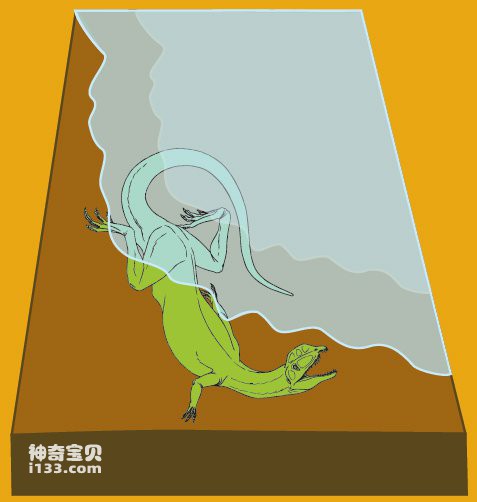
Stage 1: The dinosaur dies while swimming in the lake. The dinosaur's fleshy parts decomposed, but the hard bones remained intact at the bottom of the lake.
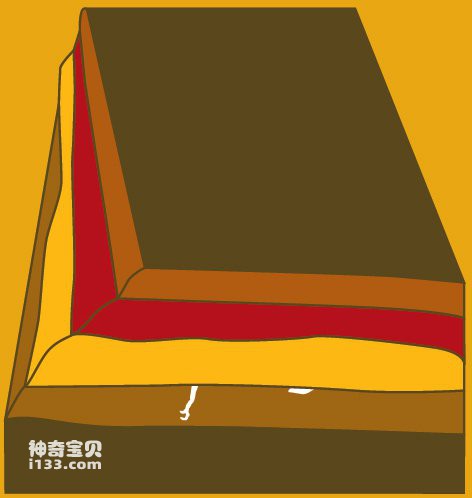
Stage 2: Sediment builds up over the dinosaur remains, and over time a thick bed of sediment builds up on top, protecting the bones from scavengers.
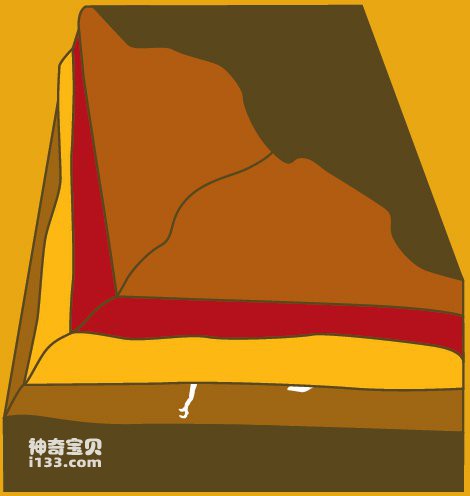
Stage Three: Gradually, the bones are replaced by minerals transported in groundwater, turning the bones into stone (this process is called holomineralization, as described above). Over time, as more sediment accumulates, pressure and compaction increase, and eventually the layers of bone and sediment become bedrock.
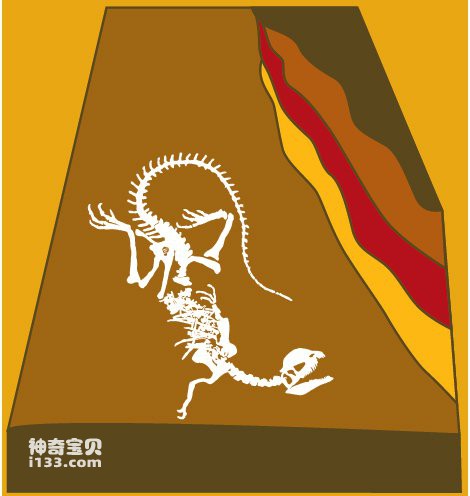
What is the fossil record?
The fossil record refers to the record of life on Earth that has been preserved, discovered, and studied by paleontologists. But records are incomplete and often favor some creatures over others.
For example, by far the most common fossil remains are those of shelled invertebrates such as snails, corals, and clams that lived in aquatic environments (lakes, rivers, and oceans).
Fossils of terrestrial organisms are much rarer than those of organisms that lived in aquatic environments. In order for these terrestrial creatures to become fossilized, they must have been either buried in a watery environment such as a lake or river, or by volcanic ash produced during a volcanic eruption. Because of this, most land creatures never have the chance to become fossils. There may be groups of terrestrial organisms for which no fossil record has yet been discovered. But this means there is much more to discover about the history of life on Earth! So we continue to investigate, explore and uncover the mysteries of Earth’s fossil record.
animal tags: fossil
We created this article in conjunction with AI technology, then made sure it was fact-checked and edited by a Animals Top editor.